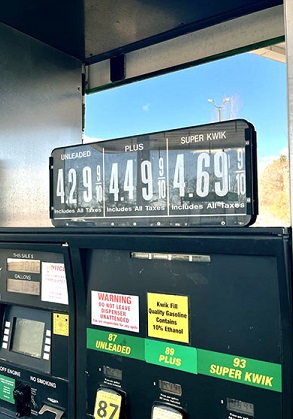The Good Times Are Rolling For Big Oil. 3 Things To Know About Their Surging Profits!
FEATURED PHOTO: BEN VAN BEURDEN CEO SHELL PETROLEUM

IdeastreamPublicMedia.org, By Brittany Cronin-NPR, Posted May 10th 2022
It’s a good time to be an oil company – and an even better time to be an oil investor.
Over the past couple of weeks, Big Oil companies have reported a surge in profits for the first three months of the year. In fact, earnings would have been even bigger had they not booked charges from exiting Russia.
But that boom is bound to raise scrutiny from Democrats who believe Big Oil’s profits are coming at the expense of American consumers saddled with high prices at the gas pump.
Here are three things to know about the earnings in the oil sector.
Big Oil is riding the wave of higher energy prices
Unsurprisingly, it all comes down to surging crude oil prices.
Brent crude futures, the benchmark globally, have surged more than 40% this year, going above $130 a barrel following Russia’s invasion of Ukraine.
And while prices have come down since, Brent is still trading above $100 a barrel.
That’s bolstering the bottom lines for oil companies.
ExxonMobil, the country’s largest oil company, reported its net profit more than doubled to $5.5 billion from a year earlier. That was even after booking a $3.4 billion charge from exiting its operations in Russia.
Meanwhile, Chevron reported its highest quarterly profit in nearly a decade, while Shell posted its highest earnings ever.
The surge in profits comes despite the writedowns tied to Russia, and they speak to how good the quarter was for Big Oil, according to analysts.
“The bottom line is that the industry is generating the highest free cash flow certainly in the 25 years that I’ve looked at this business,” says Doug Leggate, who runs the oil and gas equity research team for Bank of America, referring to a key metric for companies.
It wasn’t always this good, however.

Oil companies suffered earlier in the pandemic, when crude even turned negative (meaning traders were actually paying buyers to get the oil off their hands).
Exxon, for example, suffered a historic net loss in 2020, its worst performance in decades.
What’s good for Big Oil is good for their investors
The record earnings in the first months of this year are leading to big dividends and share buybacks for investors.
Exxon plans to buy back up to $30 billion in shares by the end of next year, triple what it had initially projected.
Other companies, including BP and Chevron, are also returning money to shareholders.
The increased dividends and buybacks reflect the pressure that Big Oil is under from their own investors, who wants these companies to be disciplined in how much they invest in new oil production and instead return money to their shareholders.
After all, the oil sector has often been hit by boom-and-bust cycles.
Oil companies would respond to higher crude prices by sharply increasing production. So much in fact, that companies would end up flooding the market with oil, often leading to a crash in prices – and hefty losses for companies and their investors.
But pressure is bound to increase from Washington
None of this is likely to please many Democrats.

Big Oil CEOs were hauled into a Congressional hearing last month, where House Democrats accused them of gouging consumers by sharply raising gasoline prices, which the executives firmly denied.
Gasoline prices have surged to above $4 a gallon, hitting a record of $4.331 not adjusted for inflation in March, according to price records kept by AAA.
Of course, gas prices are primarily determined by global crude prices, and analysts have long dismissed accusations of price gouging as too simplistic.
At the same time, Big Oil is also under pressure to increase production by the Biden administration, which is looking for a solution to high gasoline prices.
Oil companies are increasing production, but they are doing so measuredly, given the pressure they are under from investors and given that they are constrained by supply chain and staffing challenges.
Chevron said it increased oil and gas production by 10% during the first quarter from a year earlier, and is on pace to boost output for the year.
Leggate, at Bank of America, thinks the criticism being leveled at oil companies is ultimately unfair.
Although oil companies are enjoying bumper profits, he points out that hasn’t always been the case.
“Obviously we hear a lot about the level of profitability for the industry,” he said. “But remember this industry lost a lot of money over the last 5, 6, 7, 10 years. And so if you look at it on a ten-year basis, the industry is still just moving its head above break even.”

